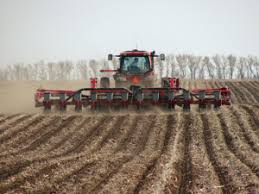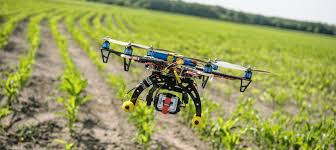9 Amazing Ways Technology has made Farming extremely easy
In recent years, the adoption of digital technologies in agriculture has been adjusting the ways that farmers treat crops, manage fields and carry out their farming activities in general. One doesn’t have to be an expert to see how the technology has changed the concept of farming making it more profitable, efficient, safer, and simpler. Modern farming technologies are used to improve the wide types of production practices employed by farmers. Technology has played a big role in developing the agricultural industry. Today it is possible to grow crops in a desert by use of agricultural biotechnology. With this technology, plants have been engineered to survive in drought conditions. Through genetic engineering scientists have managed to introduce traits into existing genes with a goal of making crops resistant to droughts and pests.
For instance, I heard that there is a bacterium known as “Bacillus Thuringiensis” that acts like a reservoir, and enables crops to be insect-resistant. Because of this, we now have genetically modified crops which can grow very well without any interference from pests. The invention of this technology is being used in developing countries to grow cash crops like cotton, since this genetically engineered cotton plants are pest resistant, they grow better than the normal cotton plants hence yielding good results and profits for farmers. Modern farms and agricultural operations work far differently than those a few decades ago, primarily because of advancements in technology, including sensors, devices, machines, and information technology. Today’s agriculture routinely uses sophisticated technologies such as robots, temperature and moisture sensors, aerial images, and GPS technology. These advanced devices and precision agriculture and robotic systems allow businesses to be more profitable, efficient, safer, and more environmentally friendly. Farmers no longer have to apply water, fertilizers, and pesticides uniformly across entire fields. Instead, they can use the minimum quantities required and target very specific areas, or even treat individual plants differently.
What is special about agricultural technologies and why are they important?
There are many benefits that agricultural technologies and we definitely cannot review all of them in a single article. However, a few important benefits include:
- Higher crop productivity: Decreased use of water, fertilizer, and pesticides, which in turn keeps food prices down
- Reduced impact on natural ecosystems – Less runoff of chemicals into rivers and groundwater
- Increased worker safety – In addition, robotic technologies enable more reliable monitoring and management of natural resources, such as air and water quality. It also gives producers greater control over plant and animal production, processing, distribution, and storage, which results in:
- Greater efficiencies and lower prices
- Safer growing conditions and safer foods
- Reduced environmental and ecological impact
Next, I want us to see some of the amazing technologies that make farming extremely easy.
- Monitoring and controlling crop irrigation systems via smartphone:
Mobile technology is playing an important role in monitoring and controlling crop irrigation systems. With this modern technology, a farmer can control his irrigation systems from a phone or computer instead of driving to each field. Moisture sensors in the ground are able to communicate information about the level of moisture present at certain depths in the soil.
- Modern transportation
This helps in making products available on markets in time, directly from the farm. With modern transportation, consumers in Dubai will consume a fresh carrots from Africa within the same day that carrot leaves the garden in Africa. Modern transportation technology facilities help farmers easily transport fertilizers or other farm products to their farms, and it also speeds the supply of agricultural products from farms to the markets where consumers get them on a daily basis.
- GIS-based agriculture
Since fields are location-based, GIS software becomes an incredibly useful tool in terms of precision farming. While using GIS software, farmers are able to map current and future changes in precipitation, temperature, crop yields, plant health, and so on. It also enables the use of GPS-based applications in-line with smart machinery to optimize fertilizer and pesticide application; given that farmers don’t have to treat the entire field, but only deal with certain areas, they are able to achieve conservation of money, effort, and time. Another great benefit of GIS-based agriculture is the application of satellites and drones to collect valuable data on vegetation, soil conditions, weather, and terrain from a bird’s-eye view. Such data significantly improves the accuracy of decision-making.
- Livestock Tracking Software
Various livestock GPS tracking software already exists that can assist in several ways and provide influential data. By tracking individual cattle movements in feedlots, for example, producers easily identify ill or injured livestock and improve traceability.
 9 Amazing Ways Technology has made Farming extremely easy
9 Amazing Ways Technology has made Farming extremely easy
- Cooling facilities
Cooling facilities are used by farmers to deliver tomatoes and other perishable crops to keep them fresh as they transport them to the market. These cooling facilities are installed in food transportation trucks, so crops like tomatoes will stay fresh upon delivery. This is a win-win situation for both the consumers of these agricultural products and the farmers. The consumers gets these products while still fresh and gets to buy much less of spoilt goods (unlike the way things were before the introduction of these cooling facilities), and the farmers on the other hand will sell all their products at good rates unlike when they were forced to sell a rates that were lower than normal rate, simply because the goods have lost value before it got to the markets.
Read Also: 7 Great Apps that makes running business very easy and profitable
-
Ultrasounds for livestock
Ultrasound is not only for checking on baby animals in the womb. It also can be used to discover what quality of meat might be found in an animal before it goes to the market. The testing of DNA helps producers to identify animals with good pedigrees and other desirable qualities. This information can also be used to help the farmer to improve the quality of his herds.
- Remote Monitoring:
Remote monitoring systems are being explored to save time and hassle performing important tasks, yet it provides instant feedback for a quick response. For example, they can be used for monitoring livestock water points, which can take up an enormous amount of their time depending on the size of the operation. These monitoring systems can be set up to monitor water troughs, dams, tanks or bores. The systems allow the farmer to check their waters while they eat their breakfast before work on a computer or tablet, saving them the time and fuel they would have used manually checking them. Also sending alerts when there is an issue, so the producer can respond quickly.
- Drones
 9 Amazing Ways Technology has made Farming extremely easy
9 Amazing Ways Technology has made Farming extremely easy
With the assistance of drones, farmers have the opportunity to define crop biomass, plant height, the presence of weeds, and water saturation on certain field areas with high precision. They deliver better and more accurate data with higher resolution in comparison to satellites. When they are locally operated, they provide valuable information even faster. Drones are also considered to be unrivaled aides in the battle against insects; the invasion is prevented by applying the insecticide on the hazard areas using drones, all while reducing the likelihood of direct exposure leading to chemical poisoning.
- Development of animal feeds
This has solved the problem of hunting for grass to feed animals, now these feeds can be manufactured and consumed by animals. The price of these feed is fair so that a low-income farmer can afford them. Most of these manufactured animal feeds have extra nutrition which improve on the animal’s health and the output of these animals will also increase. In agriculture, the health of an animal will determine its output. Poorly fed animals are always unhealthy and they produce very little results in form of milk, meet, or fur.
Hope you enjoy this article?
Share your thoughts in the comment session.
Contact us today for your business consultancy and business advisory services. We can help you fine tune your idea, structure your business, market your business, train your staff, consult on your retirement plan, coach you for financial success. We also write business plan and help with fund raising strategies and Grant applications. We can help you start, grow and expand your business.
Call or WhatsApp us now on 081 0563 6015, 080 7635 9735, 08113205312 or send email to dayohub@gmail.com and we will solve any of your business problem.
Related